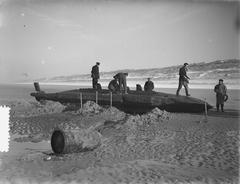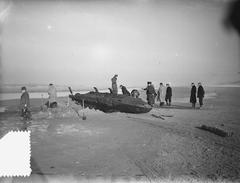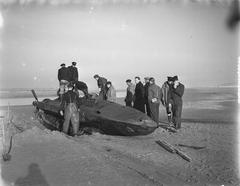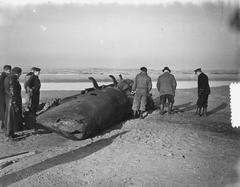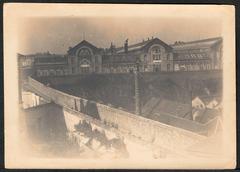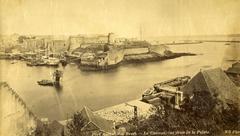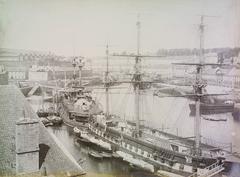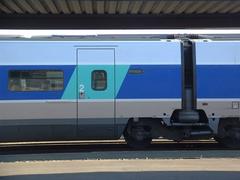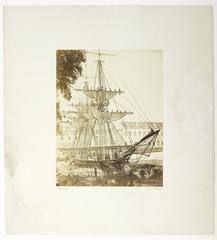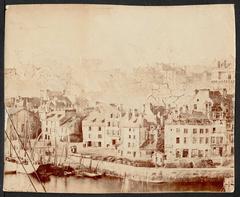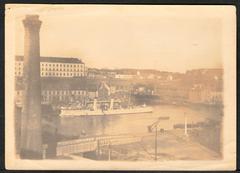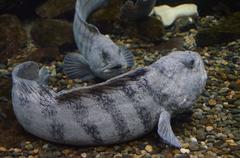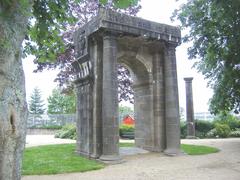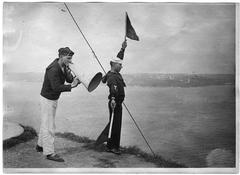
Visiting the German Seehund-Class Submarine in Brest, France: Tickets, Hours, and Tips
Date: 14/06/2025
Introduction
Nestled within the imposing walls of the historic Château de Brest, the Musée national de la Marine houses one of France’s most intriguing naval artifacts: the German Seehund-class submarine S 622. This midget submarine, developed by the Kriegsmarine in the late stages of World War II, is a testament to the era’s technological innovation, strategic desperation, and the enduring legacy of submarine warfare. Today, S 622 stands as a rare and meticulously preserved exhibit, offering visitors a direct encounter with maritime history and the unique opportunity to explore Brest’s wider naval heritage.
This guide covers everything you need to know about your visit—from historical context and exhibit features to ticketing, access, and practical travel advice. Whether you’re a military history enthusiast or looking for an enriching day out in Brest, the Seehund submarine delivers an unforgettable experience.
Table of Contents
- Discover the Seehund-Class Submarine
- History and Technical Background
- The Seehund in Brest: Exhibit Highlights
- Visitor Information
- Planning Your Visit to Brest
- FAQ
- Tips for a Great Visit
- Cultural and Historical Significance
- Enhance Your Experience: Apps and Online Resources
- Conclusion
- Sources and Official Links
Discover the Seehund-Class Submarine
The Seehund-class submarine S 622, on display at the Musée national de la Marine, is a remarkable survivor from World War II. Conceived as a stealthy two-man submarine, the Seehund—German for “seal”—was designed to target Allied shipping in coastal waters, reflecting Germany’s shift to unconventional naval tactics in the war’s final years. Today, S 622 invites visitors to examine its compact engineering and the challenging conditions endured by its crews, all within the historic setting of Brest’s iconic fortress.
History and Technical Background
Design and Features
The Seehund (Type XXVII B5) was a late-war innovation, born from Germany’s urgent need for effective countermeasures against Allied naval dominance. Unlike earlier midget submarines, the Seehund was fully submersible and featured a robust, pressure-resistant hull. Its main characteristics were:
- Length: 11.9–12 meters
- Displacement: 14.9 tonnes
- Crew: 2
- Propulsion: Diesel engine for surface running and electric motor for submerged operations
- Armament: Two externally mounted G7e torpedoes
The Seehund’s small size and quiet electric motor made it difficult for Allied sonar systems to detect, allowing it to operate in shallow, mined waters where larger U-boats could not venture.
Operational Service
Production began in July 1944, with an initial order for 1,000 units. However, only 285 were constructed due to resource constraints and shifting priorities (WarHistory.org). The Seehunds were deployed primarily in the English Channel and North Sea, conducting 142 sorties between January and April 1945. In that time, they managed to sink eight vessels (totaling over 17,000 tons) and damage three more, at the cost of 35 Seehunds lost (WarHistory.org).
After the war, several Seehunds were captured and repurposed by the French Navy for training and experimental use. S 622, now on display in Brest, is one of these rare survivors (Chemins de Mémoire).
The Seehund in Brest: Exhibit Highlights
Location and Setting
S 622 is exhibited within the Musée national de la Marine, housed in the Château de Brest. This formidable fortress, overlooking the Penfeld River and harbor, has been a site of military significance since Roman times and now serves as a museum showcasing France’s naval history (Chemins de Mémoire).
Preservation and Display
The Seehund is displayed alongside other maritime artifacts, such as a Vietnamese refugee boat, contextualizing its place within both military and broader human stories. The submarine’s preservation within the castle’s protected environment ensures its structural integrity and allows visitors to appreciate original features, including the cramped two-man compartment and torpedo mounts. Interpretive panels and, where possible, internal viewing windows, help convey the operational realities faced by Seehund crews (Deutsches Schifffahrtsmuseum).
Visitor Information
Hours, Tickets, and Accessibility
- Location: Musée national de la Marine, Château de Brest, Boulevard de la Marine, 29200 Brest, France
- Opening Hours:
- April to September: 10:00–18:30
- October to March: 13:30–18:30
- Closed on Mondays and certain holidays
- Tickets (2025 rates):
- Adults: €10
- Reduced (students, seniors, children): €8
- Free for children under 7
- Accessibility: Main museum areas and the Seehund exhibit are wheelchair accessible; contact the museum for specific assistance (Museum Accessibility Details).
Purchase tickets at the entrance or online via the museum’s ticketing platform.
Guided Tours and Educational Resources
The museum offers both self-guided and guided tours, with options in French and English upon request. Audio guides include dedicated content on the Seehund. Educational booklets and children’s activities are available, making the experience accessible to families and school groups.
Photography Guidelines
Personal photography is allowed in most areas, including the Seehund exhibit. Flash and tripods may be restricted to protect sensitive artifacts. The submarine’s exterior and the castle grounds offer excellent photo opportunities, especially in the morning light.
Planning Your Visit to Brest
Getting There
- By Public Transport: Brest’s train station is 1.5 km from the museum. Local buses and trams provide frequent service to the Château de Brest area.
- By Car: Parking is available nearby, though it can be limited during peak periods.
- On Foot: The museum is centrally located, making it accessible by a short walk from Brest city center.
Nearby Attractions
Enhance your visit by exploring other sites near the museum:
- Château de Brest: Tour the fortress and enjoy panoramic harbor views.
- Jardin du Château: A scenic garden for relaxing strolls.
- Mémorial des marins du Narval: A poignant memorial for French submariners (Mapcarta location).
- Recouvrance District: Known for historic architecture and vibrant markets.
- Local cafés and restaurants: Enjoy Breton cuisine within walking distance.
Visitor Facilities
- Restrooms
- Café and light refreshments
- Gift shop featuring maritime souvenirs
- Lockers for personal belongings
FAQ
Q: Are guided tours available in English?
A: Yes, upon request.
Q: Can I take photographs inside the submarine?
A: Photography for personal use is permitted in most areas, but flash and tripods may be restricted.
Q: Is the museum wheelchair accessible?
A: Yes, the main exhibition spaces and the Seehund display are accessible. Contact the museum for specific needs.
Q: Are tickets available online?
A: Yes, tickets can be purchased via the museum’s online platform.
Q: What is the best time to visit to avoid crowds?
A: Weekday mornings and off-season months (October to March) are generally quieter.
Tips for a Great Visit
- Book tickets in advance during peak seasons.
- Bring a light jacket or umbrella for Brest’s changeable weather.
- Make use of audio guides for deeper insight.
- Combine your submarine visit with a tour of the castle ramparts and nearby memorials.
- Check the museum calendar for special events, lectures, or commemorations.
- For families, request children’s activity booklets at the entrance.
Cultural and Historical Significance
The Seehund submarine embodies the ingenuity and desperation of late-war German naval design, serving as both a technical marvel and a reminder of the human experiences of submarine warfare. Its postwar service with the French Navy and subsequent preservation in Brest highlight the complex legacy of military technology and historical memory. The setting within the Château de Brest—a site of centuries-long military adaptation—deepens the exhibit’s resonance, connecting visitors to broader themes of resilience, innovation, and remembrance (Chemins de Mémoire).
Enhance Your Experience: Apps and Online Resources
- Audiala App: Download for guided audio tours, museum updates, and exclusive content.
- Virtual Tours: Preview the Seehund exhibit and museum via virtual resources on the museum’s website.
- Online Communities: For further discussion, join forums like the Reddit Submarines community.
Stay informed about health and safety measures by checking the museum’s practical information page.
Conclusion
A visit to the Seehund-class submarine S 622 at the Musée national de la Marine in Brest is a journey into the heart of World War II naval innovation and the city’s enduring maritime legacy. The museum’s thoughtful curation, accessibility, and educational resources ensure a rewarding experience for all visitors. By combining your exploration of the Seehund with other local attractions, you gain a fuller appreciation of Brest’s strategic and cultural importance.
Plan your visit with up-to-date information through the museum’s official channels and enhance your experience with digital resources like the Audiala app. Immerse yourself in history and discover the stories that connect the past to the present at this exceptional site.
Sources and Official Links
- Musée national de la Marine Brest
- WarHistory.org – Seehund Service History
- Chemins de Mémoire – Brest
- Brest National Naval Museum
- Deutsches Schifffahrtsmuseum – German Submarines: Technology, Fascination, and Terror
- Mapcarta – Mémorial des marins du Narval
- Reddit Submarines – Seehund Discussion
